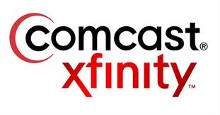Comcast wants users to share Wi-Fi

One way to extend Internet wireless coverage has always been for users to share their Wi-Fi. On June 10th, Comcast started urging its Xfinity Internet customers to share their bandwidth with its ‘Neighborhood Hotspot’ Initiative. It's not as open as it sounds.

Comcast's proposal comes on the heels of the Electronic Frontier Foundation (EFF) making a similar, but broader, suggestion. Peter Eckersley, the EFF's Technology Projects Director, said "The gradual disappearance of open wireless networks is a tragedy of the commons." This "progressive locking of wireless networks is harmful—for convenience, for privacy and for efficient use of the electromagnetic spectrum." The EFF's proposal was that people, after checking with their ISP's Terms of Service (ToS) and Acceptable Usage Policies (AUP), should share their bandwidth with the Wi-Fi service set identifier (SSID) "openwireless.org." In the EFF scheme, this connection can be shared with anyone.
Comcast's idea is more limited. In Comcast's plan, Xfinity Internet clients may offer other Comcast customers bandwidth over the “xfinitywifi” SSID. Internet traffic over this connection, the company states, will be "completely separate and distinct from the family’s private and secure home Wi-Fi signal." This traffic also won't cost customers any additional fees.
To use “xfinitywifi" hotspot visiting Xfinity Internet subscribers must sign in and connect using their own user names and passwords. According to a Comcast represenative if you're a non-subscriber you "can use the hotspots for free twice per month for up to an hour each time."
"Wi-Fi is at the center of our strategy to offer our customers the best online experience, whether it’s the fastest Wi-Fi experience in the home, or a fast and reliable Wi-Fi environment outside the home,” said Tom Nagel, Comcast's Senior VP of Business Development, in a statement. “Wi-Fi is an important part of our strategy to be the place where customers connect all devices, anywhere and at any time.”
To help make this happen, Comcast’s newest Wireless Gateway, which incorporates a Cisco 802.11n router, broadcasts two Wi-Fi signals. By default, the primary Internet connection is securely configured for the private use of the home subscriber. The second is the neighborhood "xfinitywifi" network signal that can be shared with other Comcast customers.
On the one hand, this is a far more limited Wi-Fi sharing plan than the EFF's proposal. On the other, this plan is far safer than a purely open wireless network. For Comcast's customers -- if enough of them adopt it -- this will make mobile Wi-Fi use easier for them when they're on the road. For everyone else... not so much.
Related Stories: